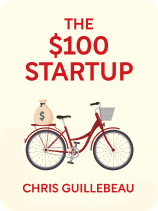

This article is an excerpt from the Shortform book guide to "The $100 Startup" by Chris Guillebeau. Shortform has the world's best summaries and analyses of books you should be reading.
Like this article? Sign up for a free trial here .
How do you create a marketing offer? What are the key elements of an effective marketing offer?
A good marketing offer can boost your sales more than the most expensive promotional campaign can. A successful offer consists of three elements: 1) alignment with your audience, 2) enticing promise, and 3) the right timing.
Here are five tips for creating a marketing offer that hits all three.
How to Create a Marketing Offer That Hits the Spot
Once you have your product in mind, develop an offer based on the value of your product. A marketing offer consists of four parts:
- An explanation of your product and its cost
- An explanation of the benefits your product provides
- Pre-emptive solutions to frequent objections
- A reason for people to buy your product right now
When developing your marleting offer, use the following format as a guide:
- Overview
- What is your product or service?
- What is the cost of your product?
- What audience would purchase your product right now?
- Benefits
- What is the primary benefit of your product?
- What are the secondary benefits of your product?
- What’s the most impactful one?
- Objections
- List the three main objections customers have to your offer.
- List three counter-arguments to address these objections.
- Urgency
- Why should customers want to buy this right now?
- What could you add to make this offer more urgent and enticing?
A successful marketing offer consists of three elements:
- Alignment with your audience. You won’t get very far if your product doesn’t appeal to your target audience. For example, if you run an online Excel course, you’ll likely have more success targeting young accounting professionals than young artistic professionals.
- An enticing promise. The value of your product should be on display. For example, if you’re selling a coupon book, marketing the amount that people can save will draw people towards your product.
- The right timing. If you release a brilliant product at the wrong time, it will likely fail. For example, if you create expensive, luxurious clothing, launching in the middle of a recession will significantly limit your client base.
5 Tips for Developing Marketing Offers
When creating your offer, keep these five tips in mind:
Tip 1: Avoid Hard-Selling
Most people like to purchase products, but they don’t like being sold on a product: It turns them away because they feel uncomfortable and pressured. While offers require gentle persuasion, if you have the proper audience and the right timing, you shouldn’t have to spend a lot of time convincing your customers that they need your product.
For example, if you went door-to-door trying to sell vacuum cleaners to people who don’t necessarily need them, you’d likely have to aggressively sell your products to convince people to make a purchase. However, if you set up a website and let customers come to you, you ensure that you have the proper audience (customers that are interested in your vacuum) and the right timing (the customer needs a new vacuum).
Tip 2: Create a Sense of Urgency
Nudge your customer to purchase your product by offering time-sensitive or limited-quantity offers. These could be 2-for-1 deals, discounts, or packages. For example, if you ran a yoga studio, you could offer a limited-time offer that would give clients two months of classes for the price of one. By setting an end date for the deal, you’re urging customers to purchase before it’s “too late.”
Tip 3: Create an FAQ Page on Your Website
Building an FAQ page allows you to address objections early on and people’s minds at ease, while simultaneously displaying the value of your product. Some common concerns include:
- Does this product actually work?
- Is this worth the money?
- How do I know I can trust you?
- What are other people concerned about?
- Can I find this product or service without paying?
Note: While you do want to offer solutions to people’s concerns, you don’t want to get defensive. Focus on what makes your product valuable and avoid attacking the objection.
For example, if a commonly-asked question is “Why is this service so expensive?”, your answer shouldn’t be, “If you’re not willing to pay, then don’t buy this service.” Instead, a more productive answer would be, “Unlike other services, this service is personalized to you! While that does lead to a higher cost, this program is designed to give you the best experience possible. ”
Tip 4: Offer a Satisfaction Guarantee
Customers often worry about investing their money into a product or service that they haven’t used before. Offering a satisfaction guarantee alleviates your customers’ fears and creates a mutual bond of trust between you and your clients. For example, if you’re selling a teeth whitening product, you could promise your customers that they’ll see whiter teeth within thirty days or you’ll give their money back.
Note: Either offer a strong guarantee such as giving a full refund, or offer no guarantee at all. Middling or unclear guarantees can actually hurt your credibility. For example, a guarantee such as, “Satisfaction guaranteed. If not, we’ll figure something out,” makes you seem unsure about your own product as you’re unwilling to take on the risk of offering full refunds.
Tip 5: Overdeliver Your Product
After making a purchase, many consumers feel a moment of anxiety where they question their purchase. To alleviate this fear, go above-and-beyond to make your customers feel like they made the right choice. A few ways you can over-deliver your product include:
- Writing a handmade thank you note
- Adding in additional materials free of charge
- Giving discount codes for future purchases

———End of Preview———
Like what you just read? Read the rest of the world's best book summary and analysis of Chris Guillebeau's "The $100 Startup" at Shortform .
Here's what you'll find in our full The $100 Startup summary :
- How to start a microbusiness
- How to start a business without needing to borrow any money
- The 6 simple steps you need to follow to launch your business






